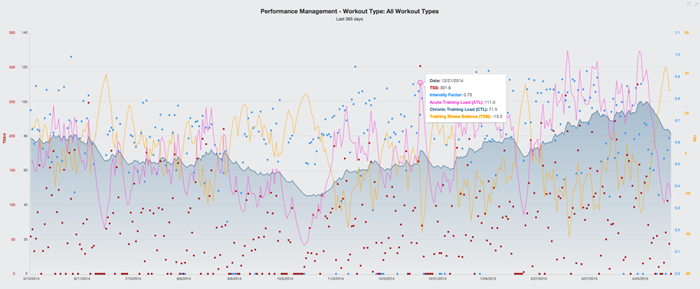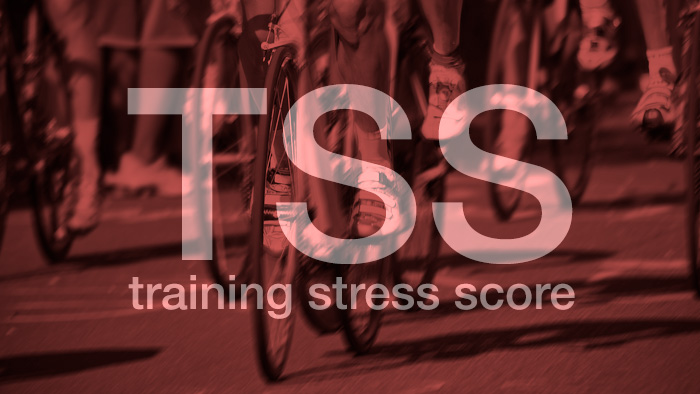By using TrainingPeaks’ Training Stress Score® (TSS®) system you can gain points for virtually any sport or activity. This allows any endurance athlete the ability to quantify their workouts based on their relative intensity, duration, and frequency of workouts. One single value can now represent how hard, and how long you worked out. 100 points earned by a pro is relatively the same as 100 points earned for a beginner because TSS is relative to each person’s individual threshold. Dr. Andy Coggan and Hunter Allen pioneered TSS with the original seed concept being developed by Dr. Eric Bannister’s heart rate-based training impulse (TRIMPS).
Using TSS for All Endurance Sports
TSS works for triathletes, cyclists, runners, and swimmers. In fact, any workout that contains power, pace, or heart rate data can be assigned a TSS value. Endurance athletes of all types can track their entire training program on one all encompassing graph- The Performance Management Chart.

Once you start to understand the simple scoring system, you will even be able to assign a daily point score through perceived exertion. Here is an explanation of how TSS works and some tips if you are just getting familiar with TSS:
- You earn 100 TSS for an all out, 100%, 60-minute workout. Of course most workouts are not completed at 100%, so most workouts will accumulate less than 100 TSS per hour.
- You can earn more than 100 TSS within a single workout (as long as it is longer than an hour), but never more than 100 TSS per hour.
- Think of intensity as an RPE value on a scale of 1-10, 10 being the hardest. If you exercised at a level 5 for two hours, then you would accumulate 50 TSS/hour or 100 total points. It wouldn’t matter if you were training for the Tour de France or to simply complete your first triathlon.
Using TSS and the Performance Management Chart
The really powerful benefit of tracking your daily TSS is your ability to leverage the TrainingPeaks Performance Management Chart to easily track fitness progression over time. TrainingPeaks will accurately calculate fitness (known as a Chronic Training Load® or CTL®), fatigue (known as Acute Training Load® or ATL®), and finally a freshness or form factor (known as Training Stress Balance® or TSB®).
We all know that fitness isn’t built through occasional exercise. Consistency and progression over time are the real secrets to long-lasting fitness. The Performance Management Chart can be one of your best tools for managing your entire season and peaking at the right time.

